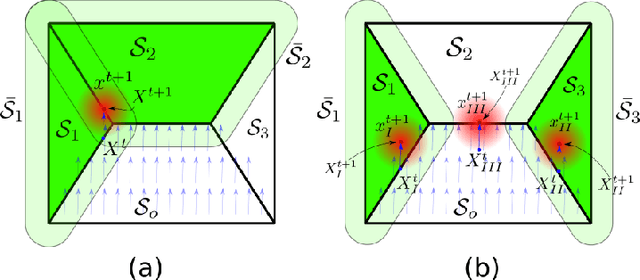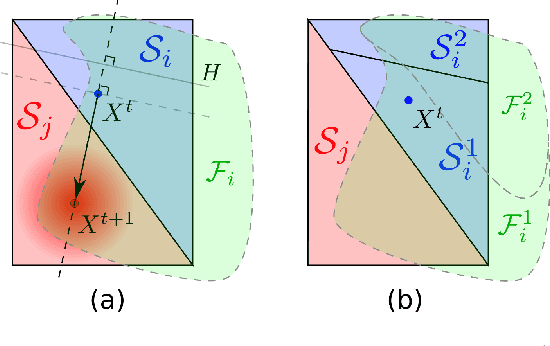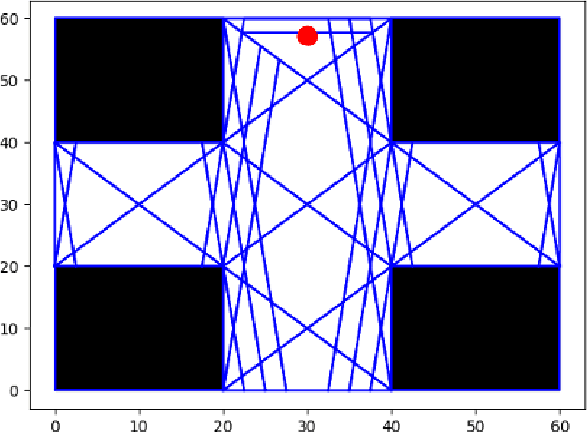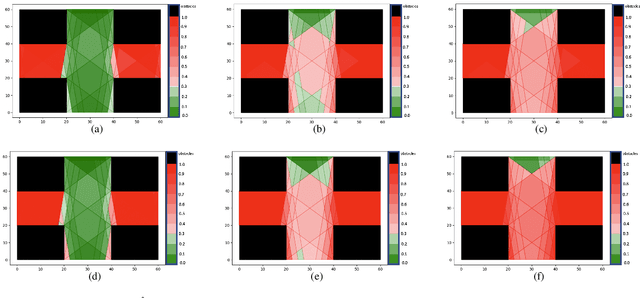Panagiotis Vlantis
Failing with Grace: Learning Neural Network Controllers that are Boundedly Unsafe
Jun 22, 2021



Abstract:In this work, we consider the problem of learning a feed-forward neural network (NN) controller to safely steer an arbitrarily shaped planar robot in a compact and obstacle-occluded workspace. Unlike existing methods that depend strongly on the density of data points close to the boundary of the safe state space to train NN controllers with closed-loop safety guarantees, we propose an approach that lifts such assumptions on the data that are hard to satisfy in practice and instead allows for graceful safety violations, i.e., of a bounded magnitude that can be spatially controlled. To do so, we employ reachability analysis methods to encapsulate safety constraints in the training process. Specifically, to obtain a computationally efficient over-approximation of the forward reachable set of the closed-loop system, we partition the robot's state space into cells and adaptively subdivide the cells that contain states which may escape the safe set under the trained control law. To do so, we first design appropriate under- and over-approximations of the robot's footprint to adaptively subdivide the configuration space into cells. Then, using the overlap between each cell's forward reachable set and the set of infeasible robot configurations as a measure for safety violations, we introduce penalty terms into the loss function that penalize this overlap in the training process. As a result, our method can learn a safe vector field for the closed-loop system and, at the same time, provide numerical worst-case bounds on safety violation over the whole configuration space, defined by the overlap between the over-approximation of the forward reachable set of the closed-loop system and the set of unsafe states. Moreover, it can control the tradeoff between computational complexity and tightness of these bounds. Finally, we provide a simulation study that verifies the efficacy of the proposed scheme.
Formal Verification of Stochastic Systems with ReLU Neural Network Controllers
Mar 08, 2021



Abstract:In this work, we address the problem of formal safety verification for stochastic cyber-physical systems (CPS) equipped with ReLU neural network (NN) controllers. Our goal is to find the set of initial states from where, with a predetermined confidence, the system will not reach an unsafe configuration within a specified time horizon. Specifically, we consider discrete-time LTI systems with Gaussian noise, which we abstract by a suitable graph. Then, we formulate a Satisfiability Modulo Convex (SMC) problem to estimate upper bounds on the transition probabilities between nodes in the graph. Using this abstraction, we propose a method to compute tight bounds on the safety probabilities of nodes in this graph, despite possible over-approximations of the transition probabilities between these nodes. Additionally, using the proposed SMC formula, we devise a heuristic method to refine the abstraction of the system in order to further improve the estimated safety bounds. Finally, we corroborate the efficacy of the proposed method with simulation results considering a robot navigation example and comparison against a state-of-the-art verification scheme.
 Add to Chrome
Add to Chrome Add to Firefox
Add to Firefox Add to Edge
Add to Edge